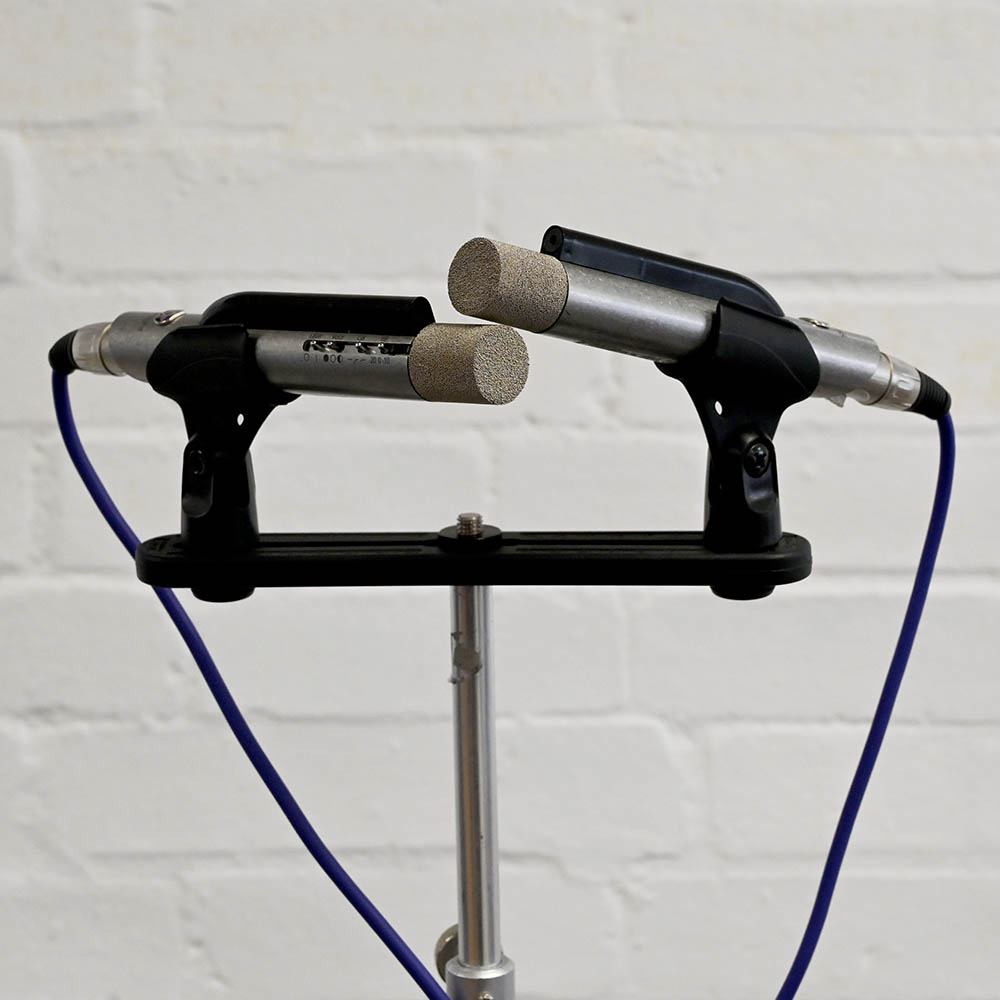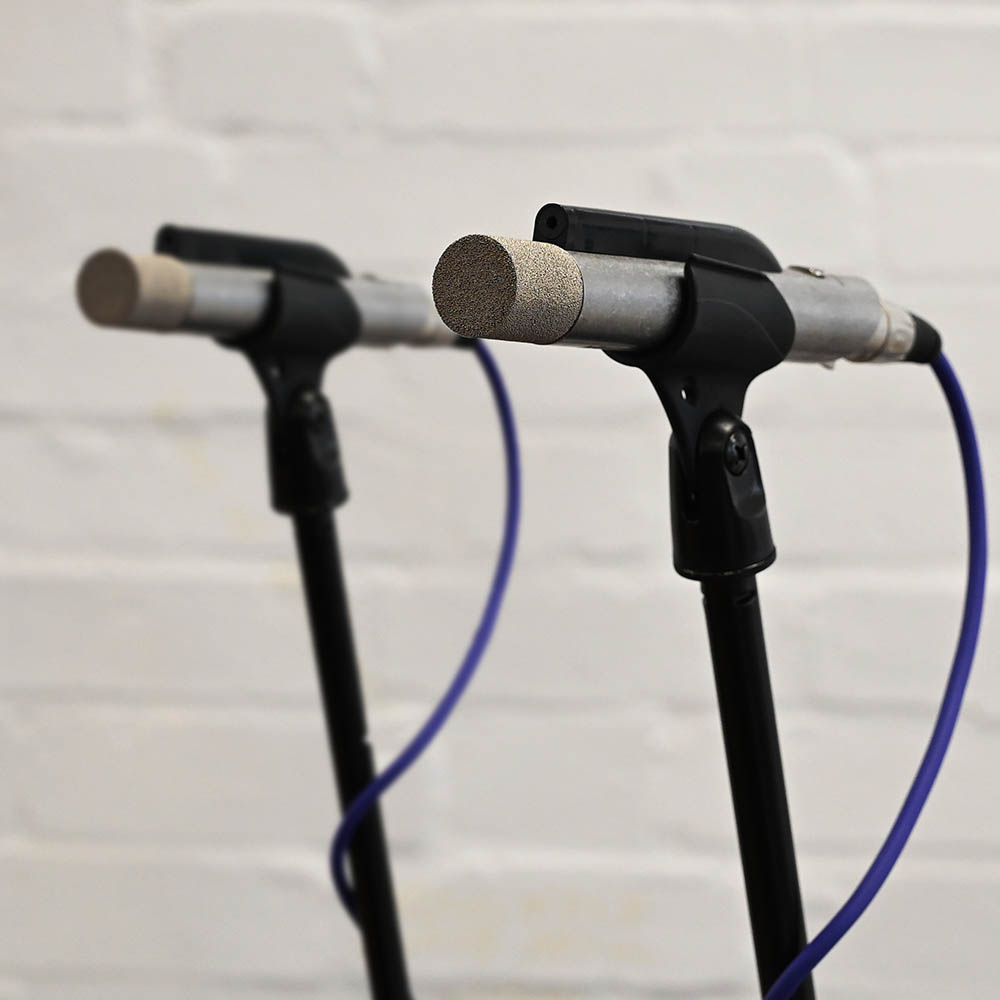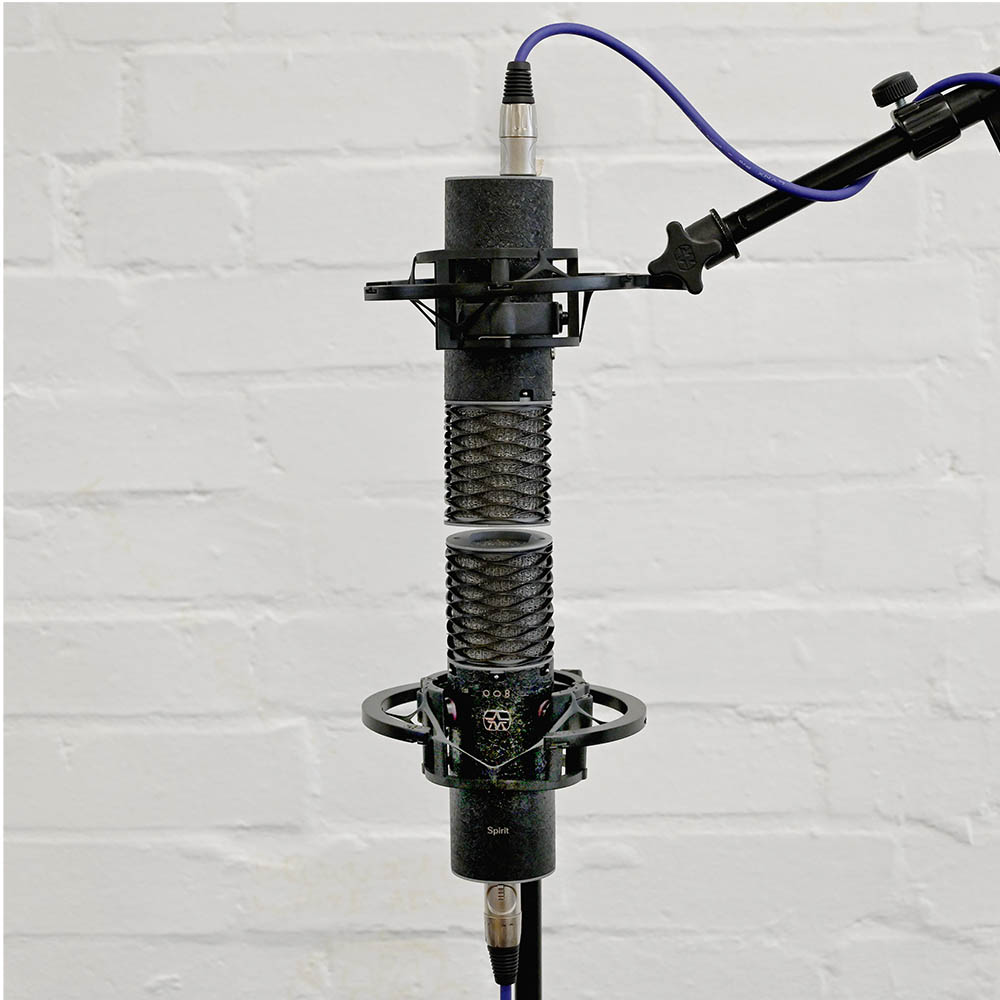Stereo mic techniques
Categories :
Captured and used carefully, stereo recordings can open up your mixes and be the difference between a good track and a great one.
It can be fun and rewarding to experiment with the placement of two mics, but there are pitfalls to be aware of. Using different model mics can make it difficult to get a balanced, cohesive sound. And placing mics different distances from the sound source will introduce phase issues, where opposing left and right waveforms cancel each other out. Although there are ways to fix phase problems in the mix, far better to capture the audio evenly to start with. Checking your recordings in mono is a good way to test for phase cancellation. If any components sound thin or have all but vanished, then there are probably conflicting waveforms present.
If you’re trying stereo recording for the first time, here are three popular methods which should be good starting points if adopted using a pair of identical model microphones.
X/Y stereo microphone technique
 Probably the most used stereo set-up, the X/Y technique sees two identical mics set at right-angles, with their capsules aligned to minimise any phase issues. You’ll usually get the best results with mics which are quite directional (i.e. with good off-axis rejection) so from the Aston range the Starlight small diaphragm condenser or the Stealth would be ideal. As both these mics have multiple voices make sure the pair you’re using are set the same.
Probably the most used stereo set-up, the X/Y technique sees two identical mics set at right-angles, with their capsules aligned to minimise any phase issues. You’ll usually get the best results with mics which are quite directional (i.e. with good off-axis rejection) so from the Aston range the Starlight small diaphragm condenser or the Stealth would be ideal. As both these mics have multiple voices make sure the pair you’re using are set the same.
X/Y does not give the widest stereo soundscape, although increasing the angle between the mics gives a degree of control over this.
A/B stereo microphone technique
 Also known as the ‘spaced pair’, the A/B technique utilises two mics, both pointing towards the sound source. These are spaced apart to taste, typically between 1m-3m. The mics can be cardioid, for focussed stereo capture, or omni for more ambient results. Like X/Y (above), A/B gives a subtle stereo spread rather than extreme width. The wider apart the mics the wider the stereo picture although the distance between them invites phase and level issues.
Also known as the ‘spaced pair’, the A/B technique utilises two mics, both pointing towards the sound source. These are spaced apart to taste, typically between 1m-3m. The mics can be cardioid, for focussed stereo capture, or omni for more ambient results. Like X/Y (above), A/B gives a subtle stereo spread rather than extreme width. The wider apart the mics the wider the stereo picture although the distance between them invites phase and level issues.
Mid/side stereo microphone technique
 The mid/side stereo technique has the advantage of giving you post-recording control over the width of your stereo spread. It also avoids any significant phase issues as the two mics’ capsules are in close proximity. You’ll need a mic with a figure-of-eight polar pattern and one with a cardioid pattern. These can be different models, however using two of the same, multi-pattern mics, such as the Aston Spirit, will give consistent sound and make level-matching straightforward.
The mid/side stereo technique has the advantage of giving you post-recording control over the width of your stereo spread. It also avoids any significant phase issues as the two mics’ capsules are in close proximity. You’ll need a mic with a figure-of-eight polar pattern and one with a cardioid pattern. These can be different models, however using two of the same, multi-pattern mics, such as the Aston Spirit, will give consistent sound and make level-matching straightforward.
The two mics should be stacked with their capsules as close together as possible, the cardioid mic facing the sound source and the figure-of-eight such that it is picking up sound from either side.
Although there are dedicated mid/side decoding solutions available you can achieve full control over the stereo recording in your DAW, so long as it has the ability to phase-reverse (all the major DAWs do). The recording from the cardioid mic should be panned centrally. Then the figure-of eight recording should be duplicated with the resulting pair panned hard left and right. Then you need to phase-reverse one of these (It’s a good idea to group the pair or send them to a bus so their levels can be changed simultaneously).
By combining the three channels you now have a stereo spread comprising centre + left and centre + right. The ‘secret sauce’ is that by changing the level of the two side channels in relation to the centre, you can now increase or decrease the stereo width of your recording to fit the needs of your mix. Cool huh?